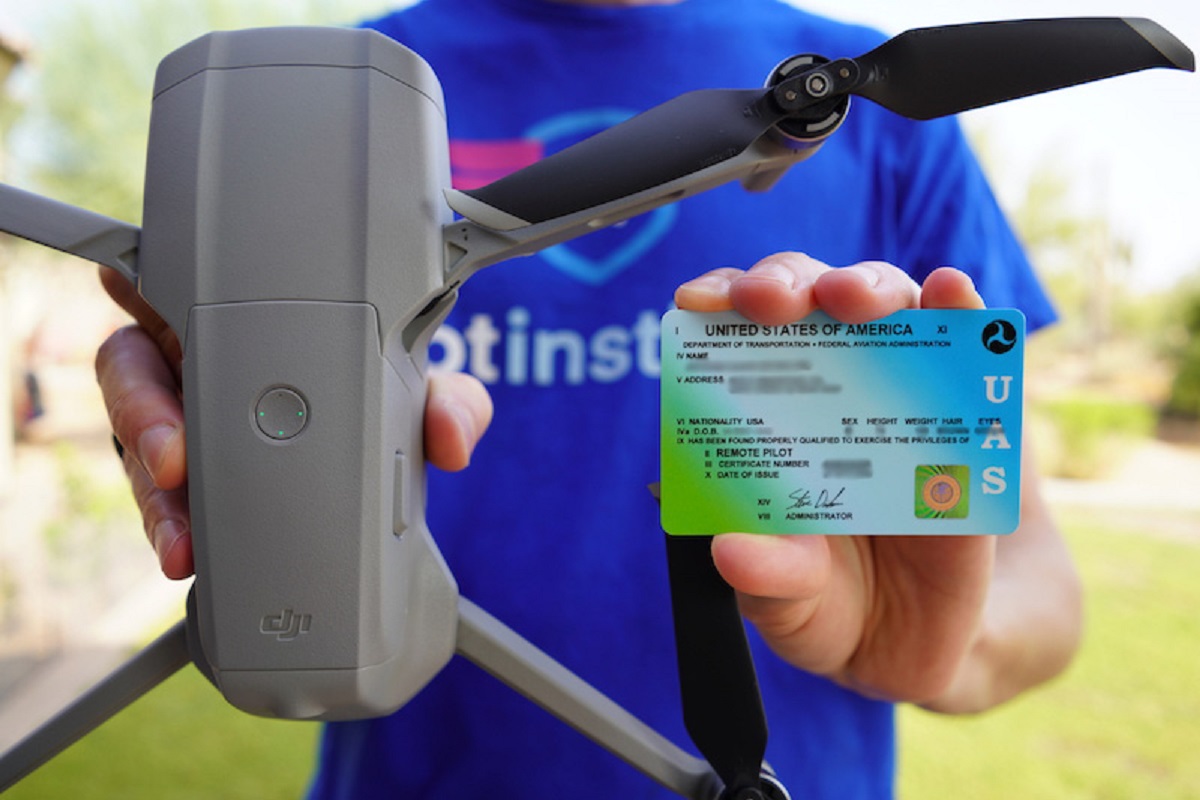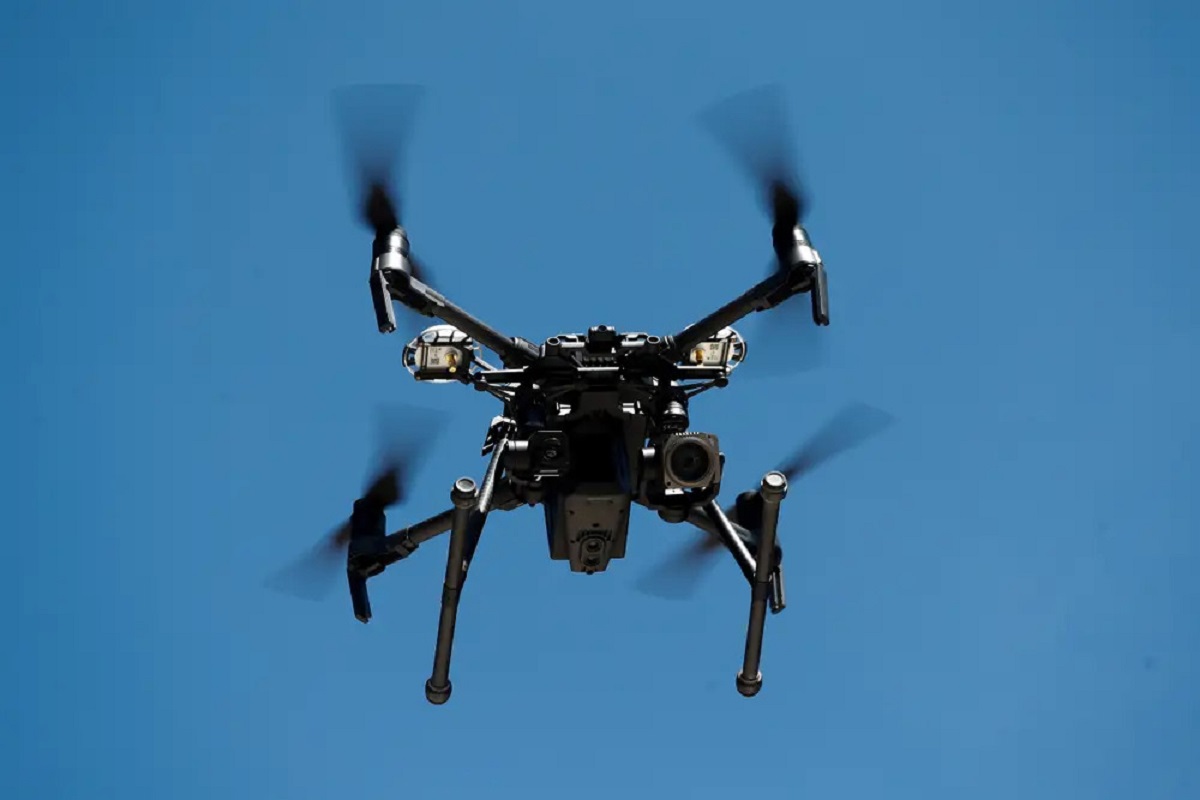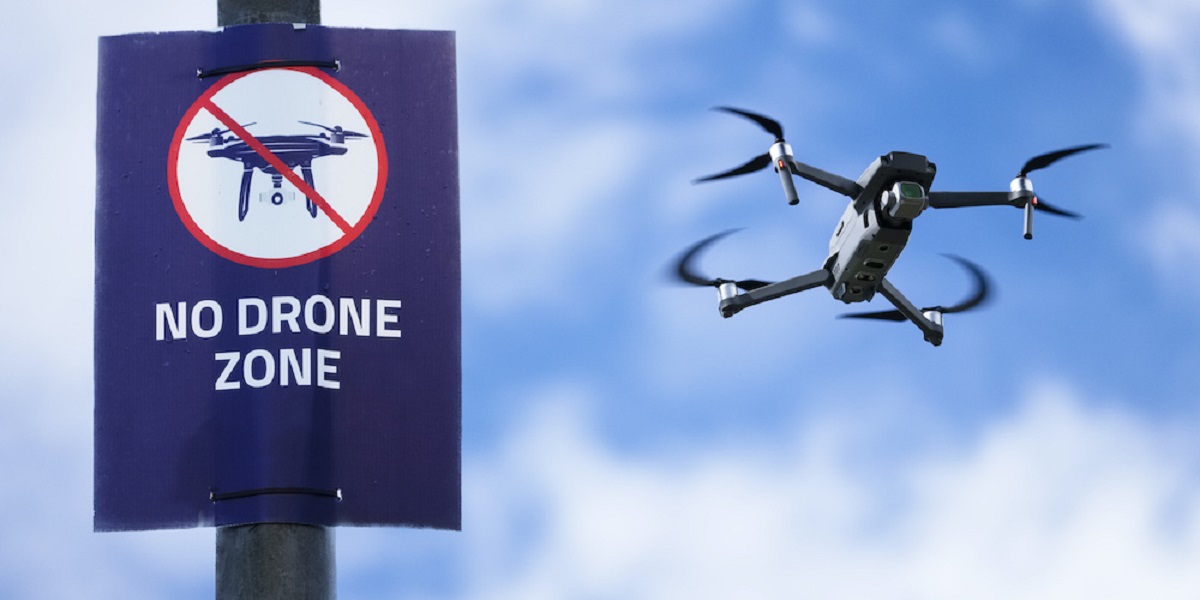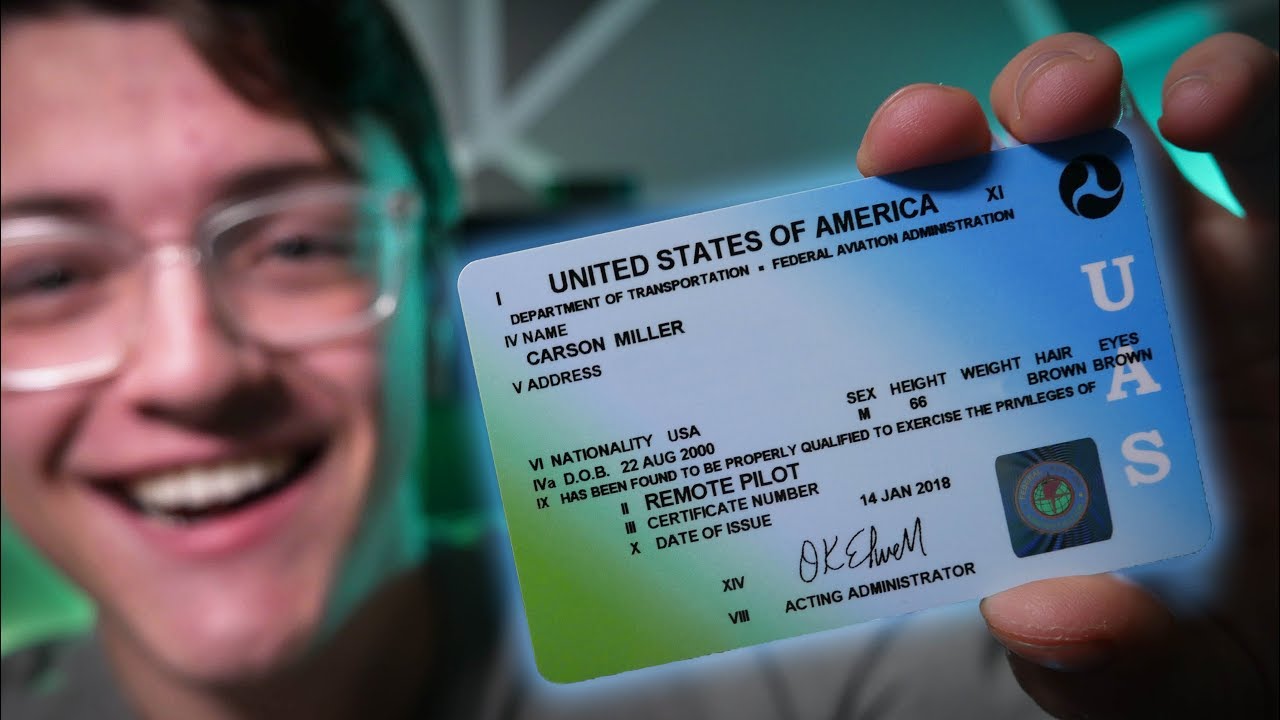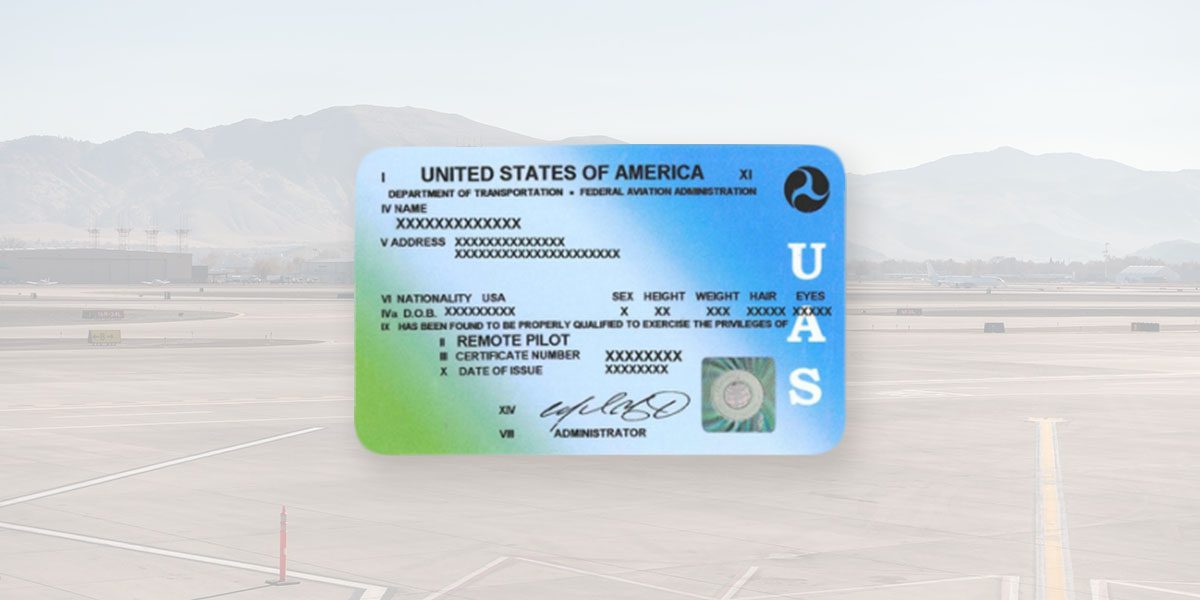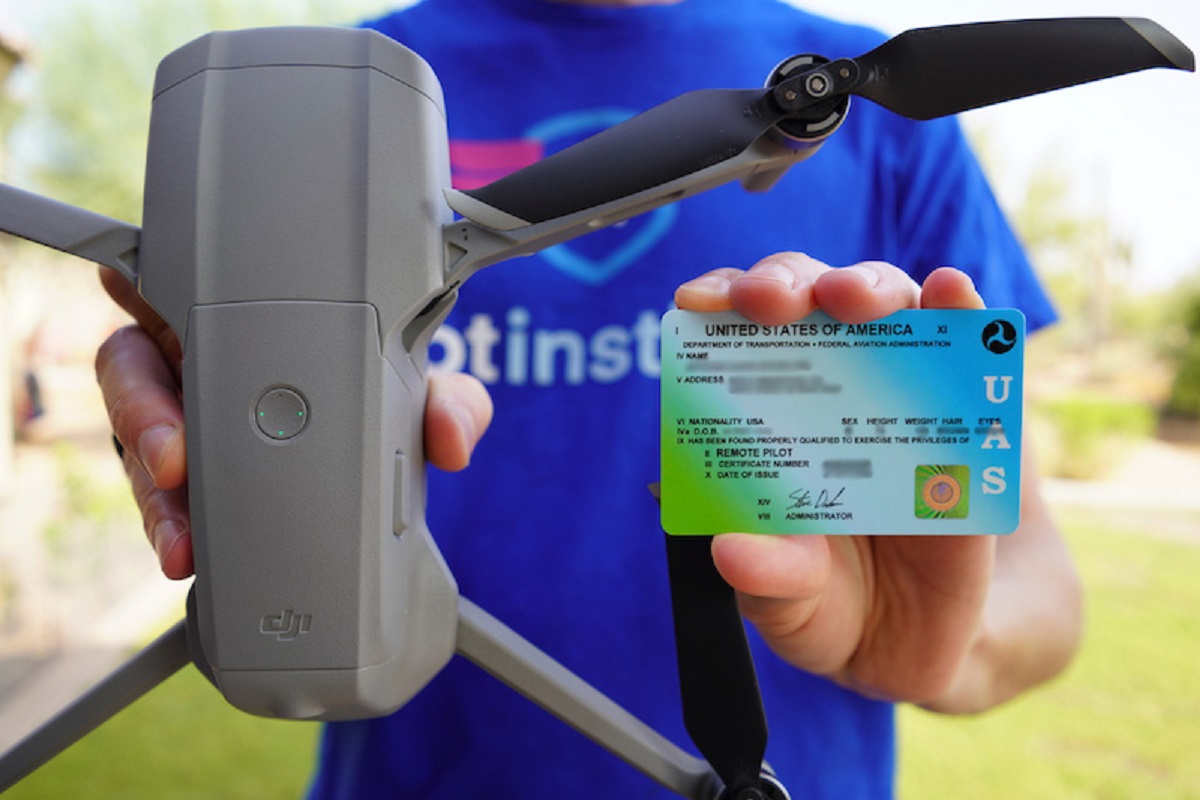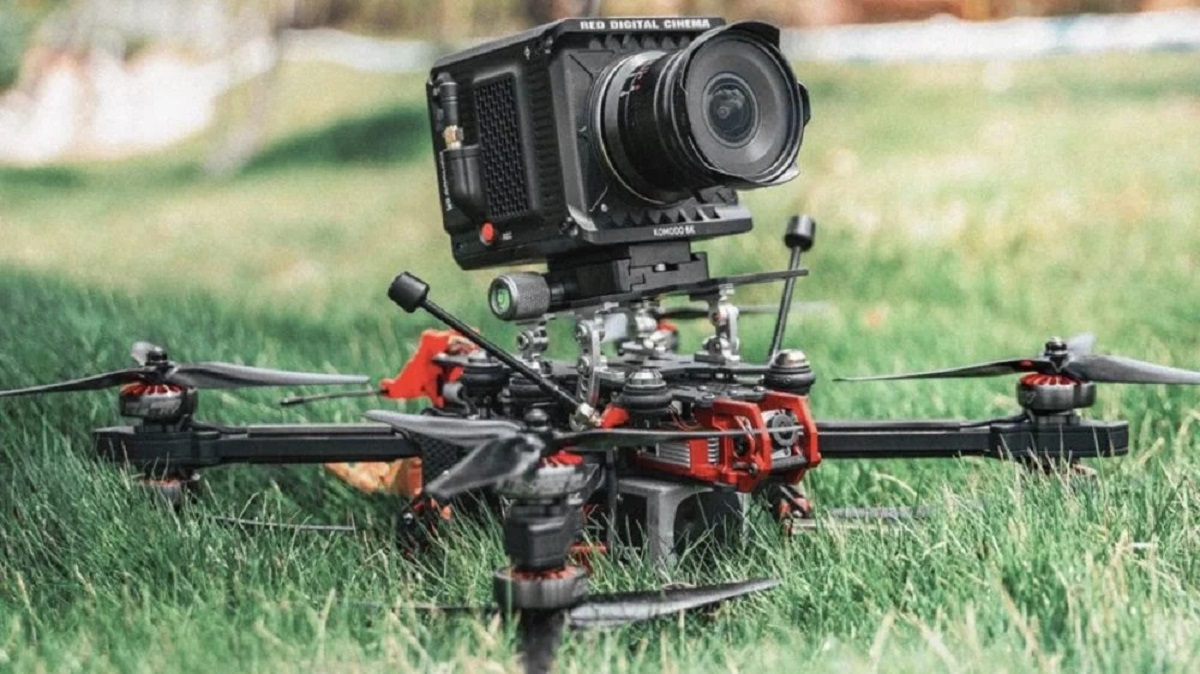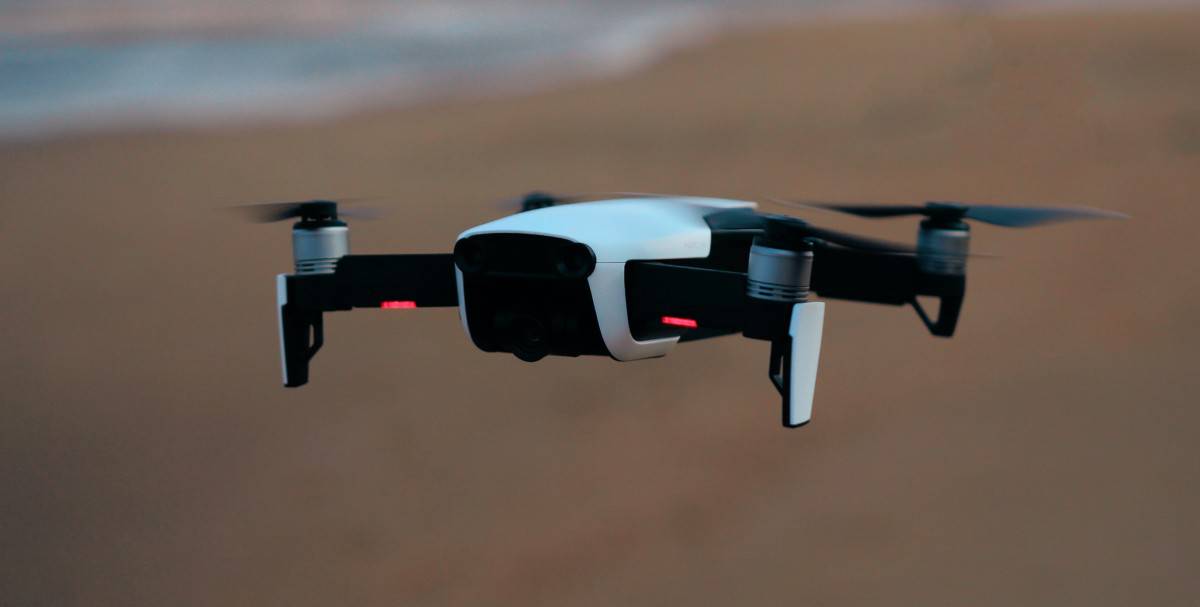Introduction
Welcome to the world of drones! Drones have become increasingly popular in recent years, both for recreational use and professional purposes. Whether you’re a hobbyist wanting to capture stunning aerial footage or an entrepreneur looking to start a drone photography business, obtaining a drone license is a crucial step towards legally operating a drone.
Obtaining a drone license not only ensures safety and compliance with aviation regulations, but also opens up a world of opportunities for drone enthusiasts. In the United States, the Federal Aviation Administration (FAA) governs the rules and regulations for flying drones commercially. While recreational drone pilots may not require a license, those intending to utilize drones for business purposes need to obtain a Part 107 Remote Pilot Certificate.
Understanding the process and timeline for obtaining a drone license is important for aspiring commercial drone pilots. In this article, we will guide you through the requirements and steps involved in getting a drone license, as well as discuss the factors that can influence the duration of the application process.
It’s important to note that regulations and processes may vary across different countries and regions. This article focuses primarily on the requirements and timelines for obtaining a drone license in the United States. If you reside outside the U.S., make sure to consult the relevant aviation authorities in your country for accurate information.
So, if you’re ready to take your drone flying to new heights and turn your passion into a profession, let’s delve into the world of drone licensing and discover how long it takes to obtain a drone license!
Requirements for Getting a Drone License
Before you can become a licensed drone pilot, there are several requirements that you need to fulfill. These requirements are in place to ensure that you have the necessary knowledge and skills to operate a drone safely and responsibly. Let’s take a closer look at the key requirements for obtaining a drone license:
1. Minimum Age Requirement: To apply for a Part 107 Remote Pilot Certificate in the United States, you must be at least 16 years old. This age requirement ensures that you have the maturity and responsibility to handle the responsibilities of drone piloting.
2. Passing the Aeronautical Knowledge Test: One of the main requirements for obtaining a drone license is to pass the FAA’s Aeronautical Knowledge Test. This exam covers various topics such as airspace regulations, weather conditions, emergency procedures, and more. It tests your understanding of aviation principles and ensures that you have the necessary knowledge to operate a drone safely.
3. Security Background Check: As part of the application process, you will need to undergo a security background check conducted by the Transportation Security Administration (TSA). This check aims to ensure that you do not pose a threat to national security.
4. Medical Fitness: Unlike traditional pilots, who require a medical certificate, drone pilots do not need to meet specific medical fitness requirements. However, it is still important to assess your own physical and mental fitness to ensure that you can safely operate a drone.
5. English Proficiency: In order to understand and communicate with air traffic controllers, it is required that drone pilots have a sufficient level of English proficiency. This ensures clear and effective communication, minimizing the risk of accidents.
It is important to note that these requirements may change over time, so it is essential to stay updated with the latest regulations and guidelines set by the aviation authority in your country. By meeting these requirements, you can display your knowledge and competence in operating drones, and move closer to obtaining your drone license.
Part 107 Remote Pilot Certificate
The Part 107 Remote Pilot Certificate is a crucial document for individuals who want to operate drones commercially in the United States. Issued by the Federal Aviation Administration (FAA), this certificate demonstrates that you have met the necessary requirements to safely and legally pilot a drone for business purposes.
To obtain a Part 107 Remote Pilot Certificate, you must successfully complete the application process, which includes passing the FAA’s Aeronautical Knowledge Test. This test assesses your understanding of various topics related to drone operations, airspace regulations, weather conditions, emergency procedures, and more. It is advisable to thoroughly study the FAA’s Remote Pilot Study Guide and take practice exams to ensure you are well-prepared for the test.
Once you have passed the knowledge test, you can submit your application for the Part 107 Remote Pilot Certificate through the FAA’s Integrated Airman Certification and Rating Application (IACRA) system. The application process requires you to provide personal information, pass a TSA security background check, and pay the applicable fees.
After submitting your application, you will receive a confirmation email from the FAA. The processing time can vary but is typically around 6 to 8 weeks. During this period, the FAA will review your application, conduct the necessary background checks, and verify your eligibility for the certificate.
If your application is approved, you will receive a temporary Remote Pilot Certificate via email. This temporary certificate allows you to legally operate a drone while you wait for the permanent certificate to arrive by mail. The permanent certificate usually arrives within 120 days of the FAA’s approval of your application.
It is important to note that the Part 107 Remote Pilot Certificate is valid for 24 months from the date of issuance. To maintain your certification, you must pass a recurrent knowledge test every 24 months. This test ensures that you stay updated with any regulatory changes and continue to possess the necessary knowledge to operate drones safely and responsibly.
Obtaining a Part 107 Remote Pilot Certificate is an essential step for aspiring commercial drone pilots. It not only demonstrates your professionalism and commitment to safe drone operations but also opens up a wide range of business opportunities in various industries such as aerial photography, videography, surveying, mapping, and more.
Initial Application Process
The initial application process for obtaining a drone license involves several steps and requirements. Let’s take a closer look at the key elements of the application process:
1. Registering with the FAA: Before you can apply for a Part 107 Remote Pilot Certificate, you must register your drone with the Federal Aviation Administration (FAA). This registration process ensures that your drone is compliant with safety regulations and is associated with your personal information.
2. Prepare Documentation: Gather all the necessary documentation required for the application process. This includes your proof of identification, proof of age, proof of English proficiency, and any additional documents requested by the FAA.
3. Study and Preparation: Dedicate time to studying and preparing for the FAA’s Aeronautical Knowledge Test. Utilize study guides, online resources, and practice exams to familiarize yourself with the topics covered in the test.
4. Take the Aeronautical Knowledge Test: Schedule an appointment at an authorized FAA testing center to take the Aeronautical Knowledge Test. Arrive well-prepared on the scheduled date and complete the test, ensuring that you meet the passing score requirement.
5. Submit Application: Once you have successfully passed the knowledge test, proceed to submit your application for the Part 107 Remote Pilot Certificate through the FAA’s Integrated Airman Certification and Rating Application (IACRA) system. Provide the required personal information, pass the TSA security background check, and pay the applicable fees.
6. Confirmation and Processing: After submitting your application, you will receive a confirmation email from the FAA. The processing time may vary but typically takes around 6 to 8 weeks. During this period, the FAA will review your application, conduct background checks, and verify your eligibility for the certificate.
7. Temporary and Permanent Certificate: If your application is approved, you will receive a temporary Remote Pilot Certificate via email. This temporary certificate allows you to legally operate a drone while you wait for the permanent certificate to arrive by mail. The permanent certificate is typically delivered within 120 days of the FAA’s approval of your application.
The initial application process is a crucial step in obtaining a drone license. It is important to follow the FAA’s guidelines, provide accurate information, and complete all the necessary steps to ensure a smooth and successful application process. By completing these steps diligently, you will be one step closer to becoming a licensed drone pilot and embarking on exciting and rewarding drone operations.
Study and Preparation
Studying and preparing for the FAA’s Aeronautical Knowledge Test is a crucial part of obtaining a drone license. This test assesses your understanding of various topics related to drone operations and ensures that you have the necessary knowledge to operate a drone safely and responsibly. Here are some key steps to help you effectively study and prepare for the test:
1. Review the FAA’s Remote Pilot Study Guide: The FAA provides a comprehensive Remote Pilot Study Guide that covers all the topics included in the Aeronautical Knowledge Test. Take the time to thoroughly read and understand the guide, highlighting important information and taking notes.
2. Utilize Online Resources: There are numerous online resources available to help you study for the test. These include websites, videos, and practice exams that mimic the format and content of the actual test. Utilize these resources to expand your knowledge and gain familiarity with the types of questions you may encounter.
3. Take Practice Exams: Taking practice exams is an excellent way to assess your knowledge and identify areas that require further study. Many online platforms offer practice exams that simulate the actual test conditions, providing valuable insight into the test format and time management skills.
4. Focus on Key Areas: While studying, pay special attention to key areas such as airspace regulations, weather conditions, emergency procedures, and drone operation limitations. These topics are crucial for safe and responsible drone piloting.
5. Take Notes and Create Study Materials: As you study, take detailed notes and create study materials that cater to your learning style. This can include flashcards, summaries, diagrams, or mind maps to help you retain and recall information more effectively.
6. Join Study Groups or Online Forums: Engaging with other aspiring drone pilots through study groups or online forums can provide a supportive learning environment. Discussing concepts, sharing resources, and asking questions can enhance your understanding and keep you motivated throughout the study process.
7. Schedule Your Test: Once you feel confident in your knowledge and preparation, schedule your FAA Aeronautical Knowledge Test at an authorized testing center. Setting a test date not only holds you accountable but also helps you structure your study timeline.
Remember, the key to success in the Aeronautical Knowledge Test is consistent and focused study. Allocate dedicated study time daily or weekly, review materials regularly, and reinforce your understanding through practice exams. By putting in the effort and adopting effective study strategies, you’ll increase your chances of passing the test and obtaining your drone license. So, grab your study materials, dive into the FAA’s study guide, and embark on your journey to becoming a knowledgeable and skilled licensed drone pilot.
Timeframe for Processing
The timeframe for processing a drone license application can vary depending on several factors. While it is important to note that individual cases may have unique circumstances, here is a general overview of the processing timeline:
Typically, the processing time for a drone license application, including the review of documents and completion of background checks, can range from 6 to 8 weeks. This timeframe starts from the date of submission of the application through the FAA’s Integrated Airman Certification and Rating Application (IACRA) system.
During this period, the FAA reviews the application, verifies the information provided, and conducts the necessary background checks, including the security clearance from the Transportation Security Administration (TSA).
Once your application is approved, you will receive a temporary Remote Pilot Certificate via email. This document allows you to legally operate a drone while you await the arrival of your permanent certificate, which typically takes around 120 days from the approval of your application.
It is important to note that the processing time can be influenced by various factors, including the volume of applications received by the FAA at any given time. If there is a high influx of applications, it may result in longer processing times.
Moreover, any discrepancies or missing information in the application can also affect the overall processing time. It is crucial to ensure that all required documentation is submitted accurately and in a timely manner to minimize any potential delays.
If you have not received any communication from the FAA after the expected processing time, it is advisable to reach out to their support channels for an update on the status of your application.
Remember, the processing time provided is an estimate, and individual cases may vary. It is essential to be patient and allow sufficient time for the FAA to complete the necessary review and background checks.
Lastly, it is important to plan ahead and consider the processing timeline when scheduling any drone-related projects or operations. Ensuring that you have the necessary documentation and certification in place before undertaking commercial drone activities is critical for complying with aviation regulations and maintaining the safety of your operations.
Factors Affecting Processing Time
Several factors can influence the processing time of a drone license application. While individual cases may vary, it is important to be aware of the following factors that can affect the overall timeframe:
1. Application Accuracy: The accuracy and completeness of your application can greatly impact the processing time. Any discrepancies or missing information can result in delays as the FAA may need to request additional documentation or clarification.
2. Volume of Applications: The volume of applications received by the FAA at any given time can affect the processing time. During peak periods or when there is a sudden surge in applications, it may take longer for the FAA to process each application.
3. Background Checks: The FAA conducts background checks on applicants to ensure they meet the necessary security requirements. The duration of these checks can vary depending on various factors, including the complexity of the applicant’s background and the workload of the agency responsible for conducting the checks.
4. Staffing and Resources: The availability of staff and resources within the FAA can impact the processing time. Staffing shortages or resource limitations may result in longer processing times as the agency works through a backlog of applications.
5. Peak Seasons and Holidays: Certain times of the year, such as holiday periods or busy travel seasons, may experience higher volumes of applications. This surge in applications can prolong the processing time as the FAA prioritizes and manages the increased workload.
6. Communication and Follow-up: Timely and accurate communication during the application process can help expedite the overall processing time. Responding promptly to any requests or inquiries from the FAA and ensuring effective communication can help streamline the process.
7. Regulatory Changes: Changes in drone regulations or procedures may impact the processing time as the FAA adjusts to new requirements or updates its systems to accommodate regulatory changes. It is important to stay updated with any relevant changes to the licensing process and ensure compliance with the latest regulations.
While these factors can affect the processing time, it is crucial to remember that the FAA strives to process applications as efficiently as possible. If you have any concerns about the processing time of your application, it is advisable to reach out to the FAA’s support channels for assistance and updates on the status of your application.
Being well-prepared, ensuring the accuracy and completeness of your application, and staying informed about any changes or updates in the licensing process can help minimize delays and ensure a smooth and timely processing of your drone license application.
Expedited Review Options
If you are in a situation where you need your drone license application to be processed more quickly, the Federal Aviation Administration (FAA) offers some expedited review options. These options can help accelerate the processing time of your application under certain circumstances. While expedited processing is not guaranteed, it is worth exploring these options if you have a legitimate need for a faster review. Here are some possible expedited review options:
1. Emergency Situations: If you have a time-sensitive situation due to an emergency or a disaster response, you can contact the FAA to explain your circumstances. They may be able to prioritize your application and expedite the review process.
2. FAA Safety Team (FAAST) Program: The FAAST Program is designed to provide additional resources and support to members of the aviation community, including drone pilots. By participating in the FAAST Program and showing your commitment to safety and compliance, you may be eligible for expedited processing of your application.
3. Written Request for Expedited Processing: In certain cases, you can submit a written request to the FAA, explaining the reasons why you need your application to be processed more quickly. This could include time-sensitive business opportunities or other legitimate reasons. The FAA will evaluate your request and determine if expedited processing is possible.
It is important to note that these expedited review options are discretionary and subject to the FAA’s policies and procedures. While they can help in urgent situations, it is advisable to plan ahead and submit your application well in advance to avoid the need for expedited processing, if possible.
If you believe you have valid grounds for expedited review, it is recommended to contact the FAA or consult their website to understand the specific requirements and procedures for requesting expedited processing. Providing clear and compelling reasons for your request can increase the chances of a favorable decision.
Remember, these expedited review options are intended for specific circumstances, and not all requests for expedited processing will be granted. It is important to provide truthful and accurate information when making your request and to follow the FAA’s guidelines throughout the application process.
By understanding and exploring these expedited review options, you can determine if they are applicable to your situation and take the necessary steps to request a faster processing of your drone license application.
Conclusion
Obtaining a drone license is an important step for individuals looking to operate drones commercially. While the specific requirements and application procedures may vary depending on the country or region, understanding the general process and timeline can help aspiring drone pilots navigate the path to obtaining their license.
In this article, we explored the requirements for getting a drone license, including the minimum age requirement, passing the FAA’s Aeronautical Knowledge Test, undergoing a security background check, and demonstrating English proficiency. We also discussed the significance of the Part 107 Remote Pilot Certificate and its validity period.
We examined the initial application process, which includes registering with the FAA, gathering the necessary documentation, studying and preparing for the Aeronautical Knowledge Test, and submitting the application through the FAA’s online system. Additionally, we discussed the general timeframe for processing a drone license application and the factors that can influence the overall processing time, such as application accuracy, volume of applications, background checks, staffing and resources, and regulatory changes.
In situations where expedited processing is needed, we outlined some potential options, including emergency situations, participation in the FAA Safety Team (FAAST) Program, and submitting a written request for expedited processing.
It is important to note that the processes and requirements discussed in this article are based on general guidelines and practices. It is crucial to consult the relevant aviation authority in your country or region for accurate and up-to-date information specific to your jurisdiction.
By understanding the requirements, following the proper procedures, and allowing sufficient time for the application process, aspiring drone pilots can increase their chances of obtaining a drone license and embarking on a successful career or exciting drone operations.
So, if you’re ready to soar the skies and unlock the opportunities in the world of drones, take the necessary steps, prepare diligently, and let your passion for drone flying propel you towards becoming a licensed and responsible drone pilot.







